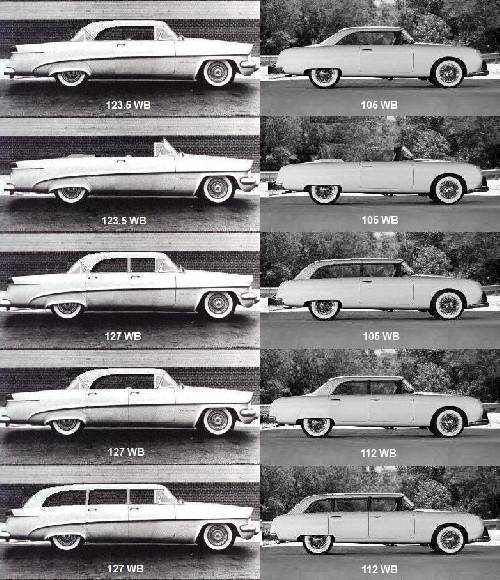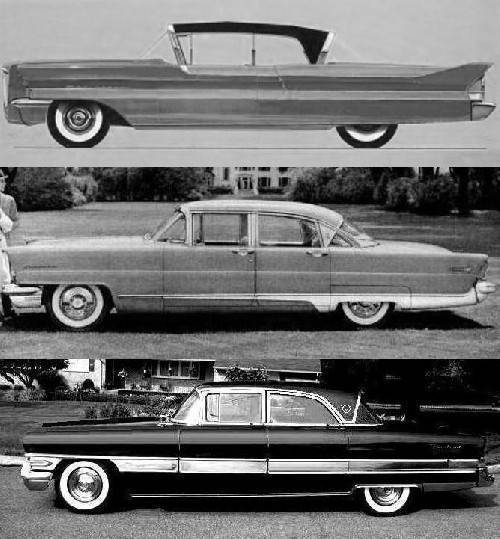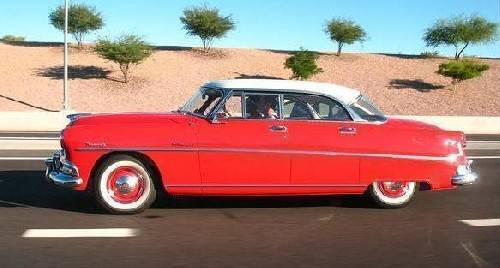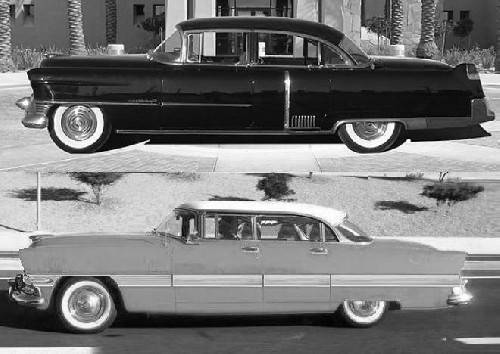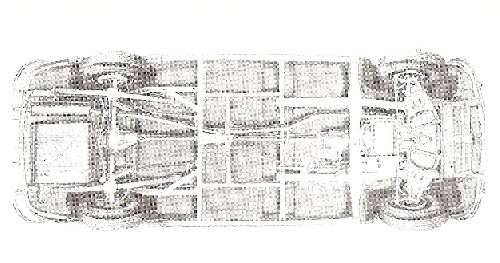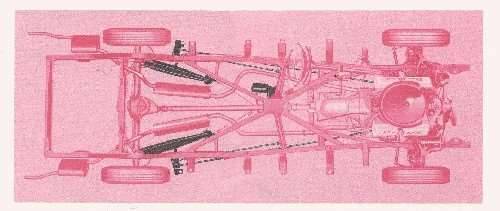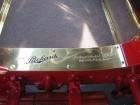|
Re: Packard & Hudson proximity
|
||||
|---|---|---|---|---|
|
Home away from home
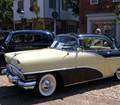
|
I concede that you have made a good case for the Hudson-Packard merger. It would have certainly made more sense than the Studebaker-Packard debacle. I still can't believe that Packard could not have learned of Studebaker's actual financial situation prior to the purchase. It is tantamount to paying $300,000 for an office building only to find that the front is a facade and behind that facade is a double-wide trailer!
Posted on: 2013/3/4 7:31
|
|||
|
You can make a lot of really neat things from the parts left over after you rebuild your engine ...
|
||||
|
||||
|
Re: Packard & Hudson proximity
|
||||
|---|---|---|---|---|
|
Home away from home

|
I found a road test of the compact Hudson Jet from 1953:
a) the clutch started slipping during the test b) the car was already rusting in places c) it got 14 mpg at 60 mph I would take the splash oil Chevy over that thing.
Posted on: 2013/3/5 0:06
|
|||
|
||||
|
Re: Packard & Hudson proximity
|
||||
|---|---|---|---|---|
|
Home away from home

|
My have found the same article:
home.comcast.net/~sarahdyoung/ScienceMechanicsAugust1953Article.html My guess is they had a problem with weather sealing in the trunk area. The too small clutch would have needed enlarged provided they had the underbody package space. Fuel economy was apparently very good at lower speeds; a 54 inch high Jet coupe with its smaller projected frontal area would have delivered better highway fuel economy. 1/2 inch thick wool in the roof... Hudson was no slouch. They made a rock solid car with overall good quality as the report suggests. The car was mostly held back by a frumpy body style. Frank Spring apparently gave Barit three Jet designs to consider. The first two were lower and stylish, the third, a very tall car that technically delivered on the headroom and height that Barit had requested but offerd little else of merit. Spring purposely made it look ugly thinking that nobody in his right mind would ever choose it. To his great dismay, Barit did.
Posted on: 2013/3/5 11:54
|
|||
|
||||
|
Re: Packard & Hudson proximity
|
||||
|---|---|---|---|---|
|
Home away from home

|
Hi
"The only recorded comment Nance made about product vis-a-vis Hudson was that Hornet might make a good entry Packard. What does it mean?" "Did he have any clue how to merge two enterprises that had things the other needed? Sticky questions! JJN seemed to be exploring so many options without firming up any specific details at the time, it's hard to know what his preferences were from one statement to another. Anyway, I decided I would take the devil's advocate approach; which, well, may mean I'm skeptical but see if I'm full of BS: First , what assets and deficits did each bring to the potential combined company: Deficits: Packard: a third year body in need of restyling, in-line L-head engines only, outside-sourced bodies with heightened potential loss of that source, body/frame construction, massive unused plant capacity, aging, multi-story factories, intracted management Hudson: a sixth year body badly in need of replacement, a failing compact line, in-line L-head engines only, outside-sourced Jet bodies, semi-unibody construction, rapidly depleting working capital, massive unused plant capacity, aging, multi-story factories, intracted management Assets: Packard: OHV V8 engine and torson bar suspension in development, proving grounds, modern engine/transmission factory, good working capital, dealer network Hudson: two low semi-unibody platforms, in-house body building capability, dealer network. What did I miss? On the points: By August '53, Hudson management realized their gamble on the Jet was a bust, their full-sized line threading water, were looking for whatever advantages a merger with another carmaker could yield. With major loses mounting, they approached Packard. EGB experienced somewhat improved '53 sales, were at least a temporary advantage if they had entered into serious negotiations. How did Nance and Barit view their respective Panthers and Italias?: likely both were only intended as high profile, attention-getter halo cars, never considered as a basis for future bread-'n-butter volume production cars. It would have been a major conceptual leap for either to embrace their 'dream' cars as the prototype of the next model series. It's doubtful either had the capability to think outside the narrow configurations that formed the bulk of the market at the time. Anything else was regarded as peripheral, a niche market sliver which they had little real interest in pursuing. As a fiberglass-bodied sportster with a degree of performance credibility, being so totally unlike any Packard in recent memory, the Panthers definitely grabbed public attention. But to what end for increasing sales? For the Italia, Barit approved limited production as a sop for Frank Spring after the Jet design debacle played out. One wonders whether, Jim Moran, the big noise Chicago Hudson dealer who influenced management to have the Jet styled as a shrunken '52 Ford with Olds 88 taillights even continued as a Hudson dealer after the failure of the Jet became manifest . Simply a guess, but I'd opine he gladly jumped ship for whatever was more promising, once Hudsons were no longer producing high sales volume. Other than middle-priced, full-sized sedans, doubtful if anyone in Hudson management could have conceived of a Jet-based general line. On the question whether Nance would have known about the success of the Studebaker Loewy coupes and hardtops versus the sedans: I doubt he would have had access to actual sales figures for specific Studebaker body series. Manufactures were pretty close-mouthed about the mix of sales as they were occurring, only reported overall sales publicly. Anecdotally, it might have been known, though South Bend management wouldn't have been eager to speak about it specifically, something of a implication of the failure of their sedans, a detriment to consider them as a merger partner. Same guys that pulled their break-even number from thin air......! "In addition to these factors we also know that in late '54 Romney spent $5.4M to pull ahead the '57 Rambler program to 1956, a scant 12-14 months away,............" Patrick Foster mentions Romney considering his options in late 1954 viewing a prototype '57 Rambler. It's program was already in progress by then, likely had a year of development work done. As it was, Rambler deliveries were delayed by start up problems into early '56. For a Packard-Hudson merger beginning late summer of '53, would have still had months of negotiations to navigate and shareholder approval votes before the consummation. A program couldn't start in earnest until early '54. Trimming the development and tooling time to any less than twenty-four months for a spring '56 introduction would have been inviting a debacle, would have still be cutting it very close. Steve
Posted on: 2013/3/5 13:08
|
|||
|
||||
|
Re: Packard & Hudson proximity
|
||||
|---|---|---|---|---|
|
Home away from home

|
Hi Steve,
Your assessment of Nance and Barit's feeling about the Italia and Panther are spot on. Barit liked chair-high seats and hat room, Nance simply followed Cadillac, which didn't lower its cars to Panther height until 1957. Also agree that Nance likely would not have had Studebaker coupe sales until the end of the year. That said, because the car was selling like hotcakes he and the rest of the industry would have likely known ballpark numbers. It might be instructive to consider the timing surrounding the AMC merger and consequent '55 Hudson launch and intro: November & December 1953 - rumors of merger with Nash January 14, 1954 - Hudson directors approve merger March 24, 1954 - Hudson stockholders approve merger May 1, 1954 - Hudson officially becomes part of AMC May 26, 1954 - Hudson employees notified that production was switching to Kenosha October 30, 1954 - production ends in Detroit November 10, 1954 - first Hornet and Rambler departs from Kenosha December 28, 1954 - first Hornet V8 is built in Kenosha February 23, 1955 - '55 Hudson officially introduced at the Chicago Auto Show The '55 Hornet and Wasp appear to have used the '55 Ambassador and Pacemaker's body except hood, which came from the '54 Nashes. Front fenders appear to have been modified '54 Nash stampings with the wheels opened up. Grill and sheet metal above grill are new while I/P is a modified '54 Hornet unit; some of these apparently came from the planned '55 Hudson update. Packard would have been far along on its own '55 program and may have been able to leverage the new I/P and windshield, the carryover hardtop and Patrician backlights and possibly their roofs in whole or modified. Tear-up to the 7 year old Hudson step-down frame would have been extensive although the firewall and floor pan and lower unibody structure back to but not including rear wheels could have been retained. Moving the front axle forward several inches as I suggested would have been straightforward given Hudson's existing two front axle locations for Hornet and Wasp. Hudson body engineers had also just completed the Jet and likely applied new learnings that could have been worked into the updated large step-down. After 7 years and two vehicle designs, they knew their technology and assembly plant intimately so there would have been no surprises. To introduce a new car in January 1955 would have been a real challenge. Life at Nash during the Rambler pull-ahead is reported to have been one of long days with Romney personally encouraging the team on. Nance would have needed to do same, Hudson's proximity greatly helping. I agree that Nance likely did not have it within him to pursue this course. Had he been a true soup-to-nuts product guy he might have instantly recognized the opportunity with the Panther, step-down and Hudson assembly operations. The ensuing conversation might have gone something like this... "I can see a Panther here! Hey Studio, what do you think?" "Absolutely Mr. Nance, no question." "Marketing, what about you?" "You build it Mr. Nance and we'll sell a ton of them." "Engineering, talk to me." "It's a better body than we have ever done, that's for sure. And an assembly line that is no worse than ours and has no surprises. They poured money into the line for the '48." "Finance, what's your bottom line?" "Mr. Nance, if we can find the money to do this program, and if it generates the sales that Marketing is suggesting, at the unit cost that Engineering is suggesting, and if we can take advantage of the close proximity between Hudson and ourselves and eliminate duplication of work, then the new company will make a ton of money in 1955 and even save some in 1954. The big question is, how is Hudson looking for 1954?" "Not good. They have a fair product in the updated Hornet that could be made a little better with our Eight, but beyond that they are approaching the new year in poor shape. How much can we save merging staff immediately?" "It will be painful for those involved Mr. Nance but we can get rid of quite a few folks. Most of our body engineering, some of Hudson's engine folks, administrative, purchasing... there is opportunity everywhere. Depends on how much of an SoB you want to be." "I'll be what I need to be to save this company. Gentlemen, let's get to work!"
Posted on: 2013/3/6 9:08
|
|||
|
||||
|
Re: Packard & Hudson proximity
|
||||
|---|---|---|---|---|
|
Home away from home

|
Jumping forward to the last gasp of planning in early '56, here's a comparo of three '57s. The first is the only side image I could find of the '57 Program. The second is a '56 Lincoln with the front axle moved forward 6 inches and a wheelbase of 132 inches, which is what Packard planned to do had it used the Lincoln body shell. The third is the previously shown '56 Patrician with front axle moved forward 7 inches and rear axle and decklid moved back 5 inches for a wheelbase of 139 inches. The Lincoln-based program carried a price tag of $9.7 million and apparently included all new sheetmetal forward of the firewall and new door and rear quarter outers as well as interior changes, tail lamps and lots of chassis work. Using this as a starting point am guessing the third option would have cost around $6-8 million including a new roof, side window frames and possibly decklid, 5 inch floorpan insert and longer frame but carrying over the rear quarter outers, interior and chassis except for the change in wheelbase.
Posted on: 2013/3/6 21:18
|
|||
|
||||
|
Re: Packard & Hudson proximity
|
||||
|---|---|---|---|---|
|
Home away from home

|
Wanted to float one more set of images before wrapping this thread up. Panther-styled car would have been wonderful for '55 using the step-down, the problem might have been cost and timing. Given the money that Packard actually spent on the '55s, which one must assume was roughly all they had available, seems the Panther was not in the cards so I next looked at what a Packard might have looked like had it used much more of the '54 Hudson. From various literature the first image below depicts where Hudson apparently wanted to go with its large car for '55. The only changes I made from their plan were to use the Hornet Hollywood's backlight rather than the more upright version they had planned, and work in a 4dr hardtop style. Second image adds hood length, rear overhang and Packard design cues and compares with '54 Cadillac. Not sure this would have done much for 'ole Packard in '55. Concluded the company's best bet might have been to work within its existing body shell but execute a bit differently, and with different timing, than what actually transpired. Will start a new thread to explore this.
Posted on: 2013/3/22 16:11
|
|||
|
||||
|
Re: Packard & Hudson proximity
|
||||
|---|---|---|---|---|
|
Home away from home

|
Just finished the Langworth book on Hudson. This book was written in the mid 70s, when many of the principle people were still around. Langworth interviewed Nance and Chapin, among others.
There is a long section of Nance describing the projected 4 way merger. Nance said he got the job of working with Studebaker because Mason told him he couldn't get anywhare with Hoffman and Vance. Nance also claimed the plan was to drop the Rambler because, in the four way tieup, Studebaker would be the cheap brand and Nash having the Rambler would not fit in the market positioning of the brands. Chapin talked about the need to get out of the Hudson Jefferson plant. He said it had workflow issues, the union was agressive and the plant itself had not been maintained for 10, maybe 20, years and was in very poor material condition. The book also has the terms of the Hudson/Nash merger. Packard ended up on the wrong end of the S-P merger because of how the stock swap was structured. At the time of the merger, Packard's market capitalization was a bit over $50M, while Studebaker's was $35M, but the stock swap was based on book value, which put Studebaker on top at $108M vs Packard's $83M. At the time of the Hudson/Nash merger, Hudson's market cap was slightly under $19M. Langworth doesn't give a clue about Hudson's book value, but I'd say it's safe to say that Packard would have been the dominate partner. Nance would have been President, which suited him, and Barit would take a seat on the board, as he did with Nash. So a Packard/Hudson merger could start out with Hudson being a retrimmed Clipper for 55-56 as the Packard body was less obsolete than the step-down. As for 57 on, the Langworth book has what I have been looking for for some time: a clear illustration of the underside of the stepdown platform. To my eye, it looks like there is room for the Torsion-Level system. The front seat of the Hudson appears to sit on an elevated platform in the floorpan, which would make room for the crossbrace that anchors the leveling motor and it's torsion bars. The Hudson back seat is also on an elevated platform, which would make room for the trailing arms for the T-L rear suspension. So 57 design would come down to the Hudson engineers designing the greasy side and Packard designing the shiny side, with the one condition that the Hudson crew had learned from the first generation stepdown and was able to design it so restyling was cost effective. If a suitable mono-built platform can be designed, then use the years with production consolidated at EBG to rennovate Jefferson, then move back to Jefferson in 57 and use the millions of dollars of line equipment that had been installed in 48. If a suitable mono-built platform cannot be created, then stay at EGB and move to a perimeter frame, with lateral braces under the seats, instead of an X member, to allow the floor to be dropped, while still leaving enough room for the torsion bars.
Posted on: 2014/8/22 11:08
|
|||
|
||||
|
Re: Packard & Hudson proximity
|
||||
|---|---|---|---|---|
|
Forum Ambassador
|
I thought one of the big problems with Hudson was the body construction and the fact so much was depending on another section so not much could be easily changed. Not sure it was actually a unibody but wasn't that one of the big hangups on yearly styling changes and why the step down stayed as it was for so long. If that is the case, wonder if the TL could have been accomplished even with the spaces you mention..
Posted on: 2014/8/22 11:30
|
|||
|
Howard
|
||||
|
||||

 (146.22 KB)
(146.22 KB)